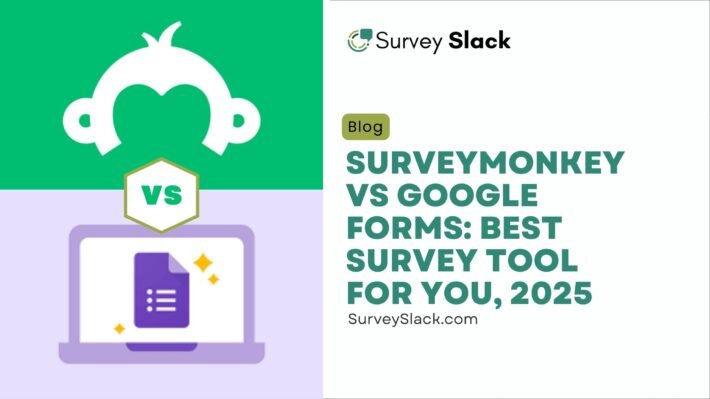The Benefits of Using a Survey Creator for Your Business

In today’s digital age, businesses need to stay connected with their customers to stay relevant in the market. One of the most effective ways to achieve this is by using a survey creator tool. A survey creator is a powerful tool that enables businesses to create custom surveys and gather valuable feedback from their customers.
Using a survey creator can bring a plethora of benefits to your business. Firstly, it can help you better understand your customers and their preferences. With the help of a survey creator, you can gather feedback on your products or services, customer experience, and more. This data can then be used to improve your offerings and provide a better experience to your customers.
Secondly, using a survey creator can save you a lot of time and effort. Traditional methods of gathering customer feedback, such as conducting phone surveys or sending out paper questionnaires, can be time-consuming and expensive. A survey creator, on the other hand, enables you to create and distribute surveys quickly and easily.
Table of contents:
- Easy and Quick Data Collection
- Increased Response Rates
- Improved Data Quality
- Cost-Effective
- Customizable
- Easy Analysis and Reporting
Lastly, a survey creator can provide you with accurate and reliable data. With advanced analytics and reporting features, you can gain insights into the data collected through your surveys. This can help you make informed decisions that drive your business forward.
Overall, using a survey creator is a cost-effective and efficient way to gather valuable feedback from your customers and improve your business operations.
Write Surveys Like a Pro
AI writes effective questions in seconds
Easy and Quick Data Collection
Data collection is an essential part of any business or research project, as it provides valuable insights into customer behavior, market trends, and other important information. However, traditional methods of data collection can be time-consuming and expensive, which is why many businesses are turning to easy and quick data collection methods. In this context, using a survey creator can be an effective way to collect data quickly and efficiently.
Explanation of how using a survey creator can make it easier and quicker to collect data:
- Customizable templates: Many survey creators offer pre-designed templates that can be customized to fit a business’s specific needs. This saves time and ensures that the survey is designed properly.
- Automated distribution: Survey creators can distribute surveys automatically to a large number of respondents, saving businesses the time and effort of manually sending out surveys.
- Real-time data collection: Survey creators allow businesses to collect data in real-time, which means that results can be analyzed immediately, providing timely insights into customer behavior or market trends.
- Advanced analytics: Many survey creators offer advanced analytics tools that make it easier to analyze and interpret survey results, saving businesses time and effort.
Examples of how this can be useful for businesses:
- Market research: A business can use a survey creator to quickly and easily collect data on customer preferences, purchasing habits, and other important market research data.
- Customer feedback: A survey creator can be used to gather customer feedback on products or services, helping businesses to identify areas for improvement and make necessary changes.
- Employee satisfaction surveys: A survey creator can be used to collect data on employee satisfaction, allowing businesses to identify areas for improvement and increase employee retention.
- Event feedback: A survey creator can be used to gather feedback from attendees at events, providing valuable insights into what worked well and what could be improved for future events.
- Product testing: A survey creator can be used to collect feedback on new products, allowing businesses to identify potential issues and make necessary changes before launching the product to the market.
Increased Response Rates
Increased response rates refer to the number of survey responses received in comparison to the number of surveys distributed. A high response rate is important because it ensures that the data collected is representative and accurate. Here’s an explanation of how survey creators can help increase response rates, and some examples of how this can be useful for businesses:
Explanation of how survey creators can help increase response rates:
- Use clear and concise language: Survey creators should use clear and concise language in their survey questions to ensure that respondents understand the questions and can provide accurate responses.
- Keep surveys short: Surveys should be short and to the point, to avoid respondents becoming fatigued or losing interest.
- Use incentives: Survey creators can use incentives such as discounts, gift cards, or free products to encourage respondents to complete the survey.
- Personalize the survey: Personalizing the survey by addressing respondents by name and tailoring the questions to their specific interests can help increase response rates.
- Use multiple channels: Survey creators can use multiple channels to distribute the survey, such as email, social media, or text messaging, to increase the chances of respondents seeing the survey.
Examples of how this can be useful for businesses:
- More accurate data: A higher response rate ensures that the data collected is more accurate and representative, leading to better insights and decision-making.
- Improved customer satisfaction: By collecting feedback from a higher number of customers, businesses can identify areas where they need to improve their products or services, leading to increased customer satisfaction.
- Increased brand loyalty: By demonstrating that they value their customers’ opinions, businesses can increase brand loyalty and improve customer retention.
- Improved employee engagement: By collecting feedback from employees, businesses can identify areas where they need to improve employee engagement, leading to a more motivated and productive workforce.
- Reduced costs: By collecting feedback from a larger number of respondents, businesses can identify areas where they can reduce costs or optimize processes, leading to improved efficiency and profitability.
Improved Data Quality
Improved data quality refers to the accuracy, completeness, and consistency of data. It is important because high-quality data can lead to better decision-making and more accurate insights. Here’s an explanation of how survey creators can improve the quality of the data collected, and some examples of how this can be useful for businesses:
Explanation of how survey creators can improve the quality of the data collected:
- Pre-testing the survey questions: Before distributing the survey, survey creators should pre-test the questions to ensure that they are clear and concise and that they are not confusing or biased.
- Ensuring random sampling: Survey creators should ensure that they are using a random sample of respondents to avoid any potential bias in the data.
- Providing clear instructions: Clear and concise instructions should be provided to respondents to minimize confusion and ensure that they are providing accurate responses.
- Minimizing response errors: Survey creators can use skip logic and validation rules to minimize the chances of respondents providing incorrect or inconsistent responses.
- Avoiding leading questions: Survey creators should avoid using leading questions that might influence respondents’ answers.
Examples of how this can be useful for businesses:
- Better decision-making: High-quality data can help businesses make better decisions by providing them with accurate insights into customer behavior, preferences, and needs.
- Improved customer satisfaction: By collecting high-quality data on customer feedback and preferences, businesses can make improvements to their products and services, leading to increased customer satisfaction.
- More effective marketing: Accurate data on customer demographics and preferences can help businesses develop more effective marketing campaigns, leading to increased sales and revenue.
- Reduced costs: High-quality data can help businesses identify areas where they can reduce costs or optimize processes, leading to improved efficiency and profitability.
- Improved risk management: Accurate data can help businesses identify potential risks and take proactive steps to mitigate them, reducing the likelihood of negative outcomes.
Also, Read:
Cost-Effective
Cost-effectiveness refers to the ability of an action to produce the desired outcome at a lower cost or expense. In the context of survey research, cost-effectiveness means using cost-efficient strategies to gather data without compromising the quality and accuracy of the results.
Explanation of how survey creators can be customized to fit a business’s specific needs:
- Use online survey tools: Online survey tools such as Google Forms, SurveyMonkey, and Qualtrics are cost-effective alternatives to traditional methods of data collection. They allow you to reach a larger audience and collect data in real-time.
- Target the right respondents: Targeting the right respondents ensures that you collect data from individuals who are relevant to your research. This helps reduce the number of responses needed to achieve your research objectives.
- Keep surveys short and simple: Long and complicated surveys can deter respondents and result in lower response rates. Keeping surveys short and simple can help increase response rates and reduce the cost per response.
- Use incentives: Offering incentives such as gift cards, discounts, or free products can encourage respondents to participate in your survey. This can help increase response rates and reduce the cost per response.
- Analyze data efficiently: Using automated tools to analyze survey data can save time and money. These tools can help you identify patterns and trends in the data quickly and accurately.
Examples of how this can be useful for businesses:
- Customer satisfaction surveys: Conducting cost-effective customer satisfaction surveys can help businesses identify areas where they can improve their products or services. This can help increase customer loyalty and reduce customer churn.
- Market research surveys: Cost-effective market research surveys can help businesses understand their target audience and identify new growth opportunities. This can help businesses make informed decisions about product development and marketing strategies.
- Employee engagement surveys: Cost-effective employee engagement surveys can help businesses identify areas where they can improve the workplace culture and increase employee satisfaction. This can help reduce turnover rates and improve overall productivity.
- Brand awareness surveys: Conducting cost-effective brand awareness surveys can help businesses understand how well their brand is known and perceived by their target audience. This can help businesses develop more effective marketing campaigns and increase brand recognition.
- Event feedback surveys: Conducting cost-effective event feedback surveys can help businesses understand how well their events were received by attendees. This can help businesses identify areas where they can improve future events and increase attendee satisfaction.
Also, Read:
Customizable
surveys refer to surveys that can be tailored to fit the specific needs of a business. By customizing surveys, businesses can collect data that is more relevant and meaningful to their operations. Here’s an explanation of how survey creators can be customized to fit a business’s specific needs, and some examples of how this can be useful for businesses:
Explanation of how survey creators can be customized to fit a business’s specific needs:
- Selecting relevant questions: Survey creators can select questions that are most relevant to the business, based on their operations, products or services, customer base, and industry.
- Personalizing the survey: Survey creators can personalize the survey by including the business’s logo, colors, and branding elements, making the survey more visually appealing and professional.
- Adding open-ended questions: Survey creators can add open-ended questions to collect qualitative data that can provide deeper insights into customers’ thoughts and feelings.
- Offering different question types: Survey creators can offer different question types, such as multiple-choice, rating scales, or ranking questions, to collect different types of data and increase response rates.
- Using skip logic: Survey creators can use skip logic to show or hide questions based on respondents’ previous answers, making the survey more efficient and targeted.
Examples of how this can be useful for businesses:
- Improved customer experience: By customizing surveys to collect feedback on specific products or services, businesses can improve the customer experience by addressing areas for improvement.
- More accurate data: By selecting relevant questions and using skip logic, businesses can collect more accurate data that is directly related to their operations.
- Better decision-making: By collecting customized data, businesses can make more informed decisions that are tailored to their specific needs and goals.
- Increased customer engagement: By personalizing the survey and offering different question types, businesses can increase customer engagement and participation.
- Competitive advantage: By collecting customized data, businesses can gain a competitive advantage by identifying trends and opportunities that are unique to their industry or market.
Create Surveys That Get Results
Design surveys that capture the right data
Easy Analysis and Reporting
Easy analysis and reporting refer to the ability to quickly and easily analyze survey data and report the findings clearly and concisely. This is important because it allows businesses to make data-driven decisions that are based on accurate insights. Here’s an explanation of how survey creators can make analysis and reporting of data easy, and some examples of how this can be useful for businesses:
Explanation of how survey creators can make analysis and reporting of data easy:
- Use data visualization tools: Survey creators can use data visualization tools such as charts, graphs, and tables to make the data easier to understand and analyze.
- Summarize the key findings: Survey creators should summarize the key findings of the survey concisely and clearly, highlighting the most important insights.
- Provide context: Survey creators should provide context for the data, explaining any relevant background information or trends that might be impacting the results.
- Compare results: Survey creators can compare the results of the current survey to previous surveys or benchmarks to provide additional context and insights.
- Use automation tools: Survey creators can use automation tools to streamline the analysis and reporting process, making it faster and more efficient.
Examples of how this can be useful for businesses:
- Faster decision-making: Easy analysis and reporting allow businesses to quickly analyze survey data and make informed decisions based on the insights.
- Improved customer satisfaction: By analyzing survey data, businesses can identify areas where they can improve their products and services, leading to increased customer satisfaction.
- Increased employee engagement: Surveys can be used to gather feedback from employees, and easy analysis and reporting can help businesses identify areas where they can improve employee engagement and satisfaction.
- Better marketing strategies: Survey data can provide insights into customer behavior and preferences, allowing businesses to develop more effective marketing strategies.
- Improved performance: By analyzing survey data, businesses can identify areas where they need to improve performance and take proactive steps to address these issues.
Conclusion
The Conclusion is a crucial part of any communication or writing, and it summarizes the key points of the topic or discussion. In the case of survey creation, the conclusion plays a vital role in highlighting the importance of using survey creators for businesses.
Recap of the Benefits of Using a Survey Creator for Businesses:
- Saves Time and Effort: Using a survey creator can save businesses time and effort by automating the process of creating and distributing surveys.
- Better Data Quality: Survey creators allow for more accurate and standardized data collection, which can lead to better-quality insights.
- Cost-Effective: Using a survey creator can be more cost-effective than hiring a third-party research firm.
- Flexibility: Survey creators allow for the creation of customized surveys that can be tailored to specific business needs.
- Increased Response Rates: Using a survey creator can increase response rates by making it easier for respondents to complete the survey.
In conclusion, using survey creators can bring significant benefits to businesses, such as improved data quality, increased response rates, and cost-effectiveness. Therefore, businesses should consider incorporating survey creators into their data collection strategies. By doing so, they can gain valuable insights that can inform decision-making and drive growth.





